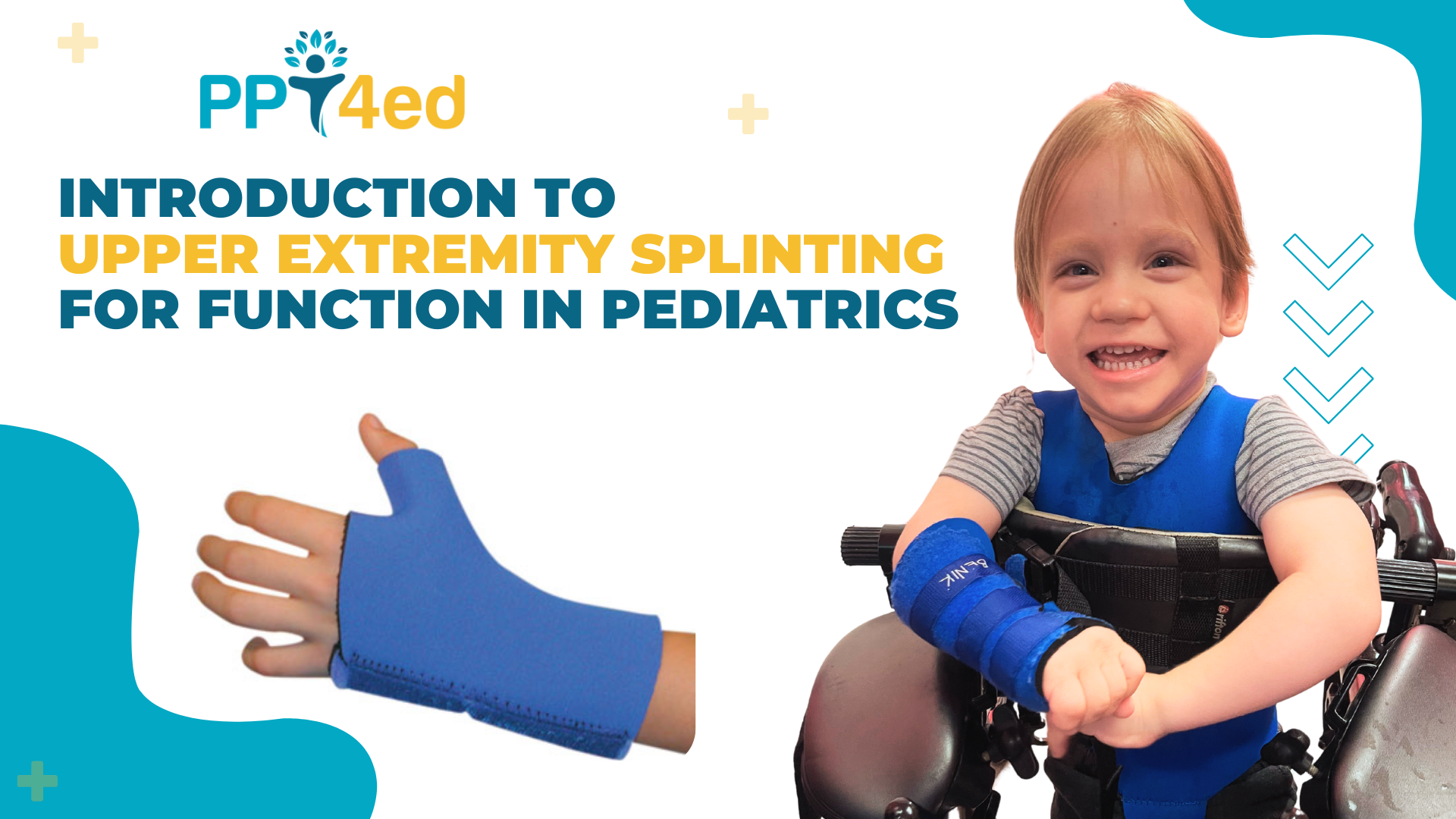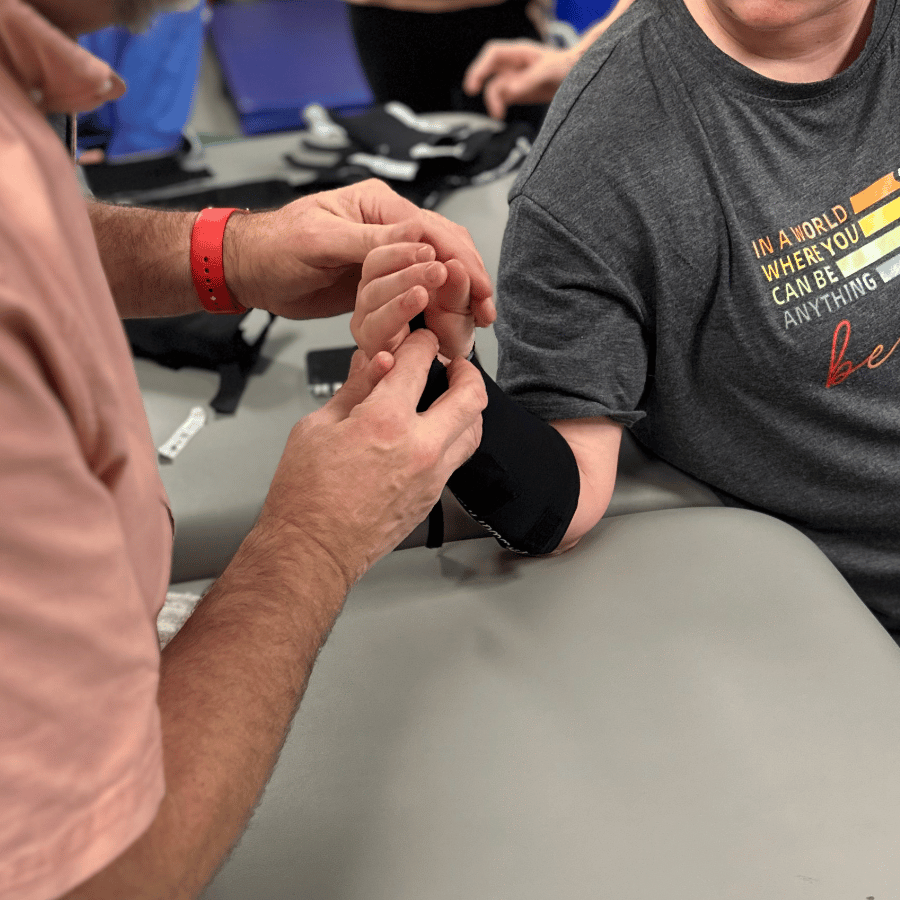Introduction to Upper Extremity Splinting for Function in Pediatrics
No. Of Credits: 2
Live Webinar
November 6, 2024
Course Duration: 2 CE Hours
Price: $45

Course Description
This introductory course will review commonly used upper extremity orthotics in the pediatric population. Participants will explore a variety of commonly used pediatric splints and understand their specific characteristics, indications and functional goals. Participants will understand the components of a thorough assessment to make informed decisions on splint selection. The course will also review patient and family education, ensuring that caregivers are well-informed and confident in the management and care of the splint. Additionally, it covers application techniques, monitoring and adjustment of splints.
Program Objectives
- Understand pediatric musculoskeletal and hand skill development that impacts approach to splinting.
- Understand components of a comprehensive clinical evaluation and assessment of the child and use this information to guide decision making for orthotic intervention.
- Identify various types of splints commonly used in pediatric care, including their features, customizations, indications, and functional goals.
- Understand additional orthotics beneficial to the pediatric population.
- Demonstrate the knowledge required to properly apply common pediatric splints.
- Beyond initial fitting- understand important aspects for orthotic monitoring and adjustment
- Identify strategies for educating patients and their caregivers about the purpose, use, and care of orthotics.
Participants will be able to
- Recognize typical vs. atypical hand development in children
- Know pros/cons of various UE orthosis/splint designs
- Perform successful assessment for UE orthoses in children
- Identify goals for use of UE orthoses/splints
- Understand benefit of LE/trunk orthoses in children
- Learn to safely don and utilize UE orthoses
- Educate caregivers in need and safe application of UE orthoses
Course Schedule
7:00 pm-8:00 pm
- Introduction: About this Course, Learning Objectives
- Review of pediatric musculoskeletal and hand skill development that impacts splinting decision making?
- Choosing a Splint: Assessment- Clinical observations, P/AROM, Muscle tone, Posturing/compensatory patterns, Palmar arches, Integrity of skin, bones, and circulatory system, and Sensory systems.
- Choosing a Splint: Considerations- Identifying Goals for Splinting, Child Factors, Wearing Schedule, Support/Stability Needed
- Review of customizable splints commonly used in pediatric care: Splint Features, Descriptions, Options and Modifications
8:00 pm-9:00 pm
- Review of additional orthotics beneficial to the pediatric population: Elbow immobilizers, Trunk Supports, SWASH brace
- Review of Application Techniques to properly apply common pediatric orthotics
- Monitoring and Adjustment: Monitoring a pediatric patient with orthotics for potential complications; Techniques for splint adjustments to ensure continued fit and effectiveness
- Patient and Caregiver Education
- Additional Information and Tips
Instructors
Cristina Rojo-Sirico MSOT, OTR/L, SIPT
Cristina Rojo-Sirico graduated with a Master of Science in Occupational Therapy degree from Florida International University. She has over 18 years experience working as a pediatric therapist in multiple settings, including private clinics, preschool and charter schools, and home care, including early intervention. She is currently the occupational therapy clinical manager at Progressive Pediatric Therapy’s West Palm Beach clinic. Cristina is SIPT (Sensory Integration and Praxis Test) certified, and holds additional certifications including Physical Agent Modalities, Therapeutic Listening, the Handwriting without Tears Program, Interactive Metronome, and both the AEIOU and SOS feeding approaches. She has also completed courses in the areas of whole body vibration, orthotics, therapeutic taping, reflex integration, and learning disabilities. Cristina is passionate about integrating this knowledge to evaluate and treat children and adolescents of a variety of ages and needs. She is enthusiastic about helping children develop independence through adaptations and accessibility, and incorporating her passion for animals with animal assisted therapy. She is dedicated to continuously expanding her clinical knowledge through coursework, as well as providing learning opportunities and mentorship to other therapists and community members.




